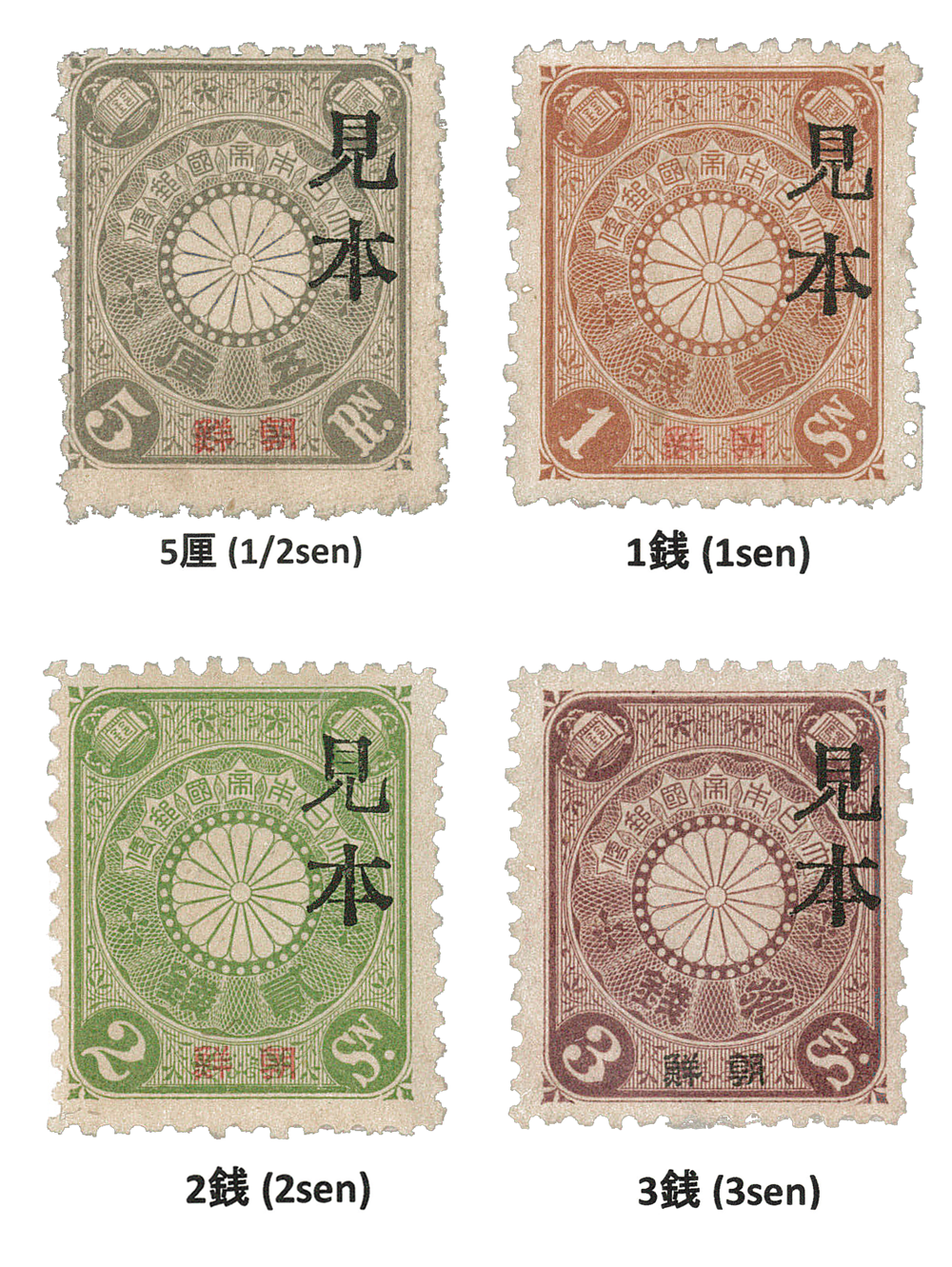
朝鮮字入菊切手 1 1900(明治33年)1月1日 (みほん)
1895年(明治28)に日本は日清戦争に勝利した。日本は、当時、中国の実質的支配下に置かれていた韓国に軍を駐留させ、民間人による現地での経済活動を促進させた。
1899年(明治32)11月、逓信省令により、1900年1月から在朝鮮及び在支那(中国)で売り捌かれる切手は、「朝鮮」または「支那」の加刷をすることとなった。その理由は、当時、朝鮮や支那の通貨は日本円に比べ実勢レートが20%程度低かったため、現地通貨で日本切手を 買い、日本国内郵便局で買戻し請求する差益獲得事例が出てきたため、その防止策として 加刷切手の発行が行われた。従って、これらの加刷切手は、日本国内では使用できなかった。しかし、発行したばかりの朝鮮加刷切手は、1901年から売り捌きが停止された。韓国内で日本通貨が大幅に流通するようになり、不正購入が出来なくなったことが主因である。
------------
上記は正刷切手のみほんである。
正刷切手および詳細説明はこちらをご覧ください。
------------
Korean overprint・ Chrysanthemum Series 1 Issued on 1 1, 1900 (Meiji33) - Specimen -
In 1895 (Meiji 28), Japan won the Sino-Japanese War. Japan stationed troops in Korea, which was under substantial control of China at the time, and promoted local economic activities by civilians.In November 1899 (Meiji 32), by the Ordinance of the Ministry of Communications, stamps sold in Korea and China from January 1900 will be overprinted with "Korea" or "China". The reason is that at that time, the prevailing rate of Korean and Chinese currencies was 20% lower than Japanese yen, so there were cases where Japanese stamps were bought in the local currency and repurchased at post offices in Japan. As a preventive measure, reprint stamps were issued. Therefore, these overprint stamps could not be used in Japan. However, the Korean overprint stamps that had just been issued were no longer sold in 1901. The main reason for this is that the Japanese currency has become widely distributed in Korea, making it impossible to make illegal purchases.
------------
The above is only true for specimen stamps.
For more information and official printed stamps, see this.
------------
